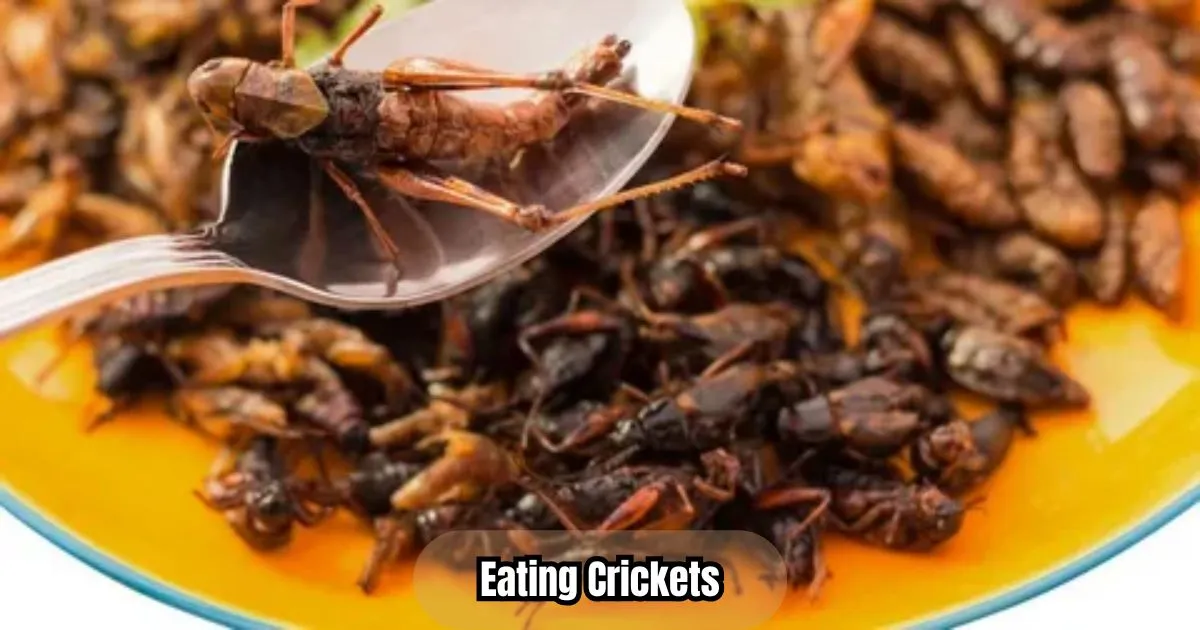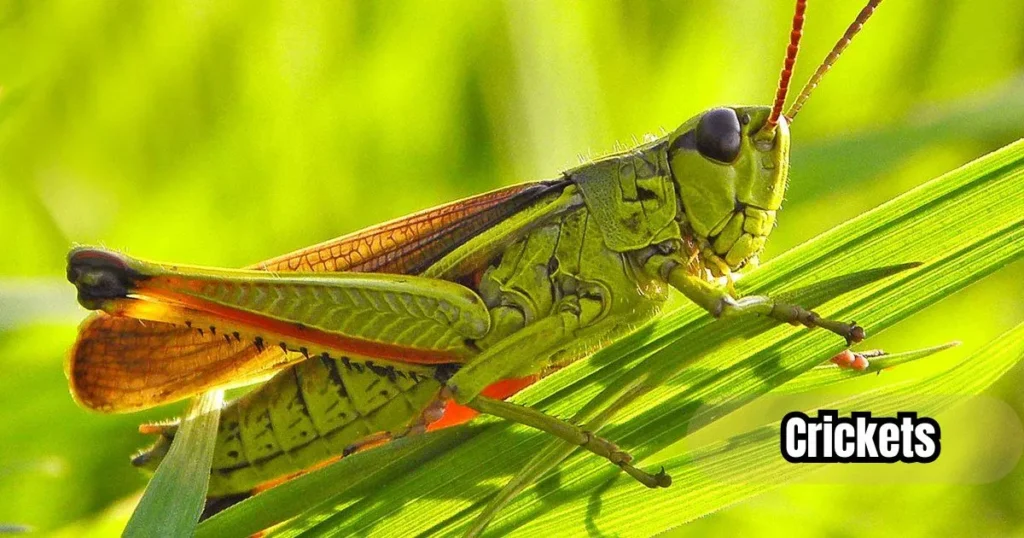What do crickets eat? If you’re keeping crickets as food for every other pet including a gecko, snake, or bearded dragon, maintain in mind that something you feed your crickets may also be providing nourishment for your pet.
The process of feeding prey crickets nutritious meals is referred to as “gut loading.” When feeding your crickets, you may choose from numerous nutritious food. Fruits, which include apples, oranges, and bananas.
Vegetables, along with carrots, potatoes, squash, and leafy veggies
Grains, along with alfalfa, wheat germ, and rice cereal Other packaged puppy ingredients, together with fish flakes, dry cat food, dry dog meals, and reptile food Commercial meals made particularly for crickets
What do crickets eat? Ever wondered what these little insects munch on to stay active?
Crickets are nocturnal insects, becoming more energetic at night (which is why you tend to pay attention to chirping at bedtime). They prefer warmth over the bloodless and will hibernate or are looking for refuge interior at some point of the iciness.
Cricket eggs hatch in the spring, becoming nymphs and adults over the summer time and early fall. During this time, crickets are maximum visible and ample.
Read more: Exploring the Flavorful Herb World of Green for Ramen
How to feed your Crickets

Ensure that your crickets have consistent admission to meals and clean water. Crickets will self-modify their food intake. There is no need to measure exact quantities of meals.
Be sure to check at least each 2 days to make sure your crickets nevertheless have lots of meals and water.
Whole veggies and fruits may be placed inside the cage. Dried puppy ingredients and grains also can be served in shallow dishes or lids.
Common Concerns Feeding Crickets
There are a few pleasant practices to preserve in mind with regards to feeding crickets. These will help your crickets stay as healthful as feasible and offer a nutritious meal in your reptile.
You will want to make certain that you provide a dwelling scenario unfastened from mildew and humidity, and that your crickets have safe admission to meals and water.
Preventing mold and humidity.
Crickets require right air circulation and clean food to thrive. When humidity levels are too excessive, your crickets might not live on. It is recommended to keep your crickets in a deep field or terrarium with a lid and right air ventilation. The perfect temperature for crickets is among 70 and seventy five tiers Fahrenheit.
To preserve your habitat as hygienic as viable for your crickets, devote one aspect of the habitat to food and water. Check regularly to ensure that the meals continue to be clean and freed from mildew.
Grains and dried pet food can be supplied constantly. These will not mold as quickly as sparkling produce, which should be offered extra fairly.
Providing a secure ingesting and consuming environment. Crickets aren’t very tall, and may effortlessly drown if ingesting water is simply too deep. To offer a safe ingesting surroundings in your crickets, keep in mind filling a shallow lid, consisting of one from a yogurt field, with a few small rocks or fish tank pebbles and some water.
This will offer the crickets with a safe way to get admission to their ingesting water while preserving a firm footing on the pebbles.
Some cricket proprietors will submerge cotton balls in water and place those inside the habitat. This offers crickets with a secure way to stay hydrated.
For meals, it’s far recommended to hold the food and break away the water source so that grains and dry food do not emerge as damp and more vulnerable to mold.
Eating Crickets

Storing Crickets
Most crickets come frozen or roasted. Both can be saved within the freezer until geared up to use to hold best. As it is high in protein, cricket flour, too, should be stored in the freezer to preserve Cooking with crickets
Crickets must be cooked earlier than consumed. They are usually first boiled, then roasted or pan-fried. Freezing crickets earlier than boiling will place them to sleep (much like lobsters) which ensures they won’t hop out of the pot.
Crickets can be included in any easy stir-fry or deep-fried as a snack. Roasting is also a very good option for preparing crickets. Then you may top them with seasonings and eat as-is, dip them in chocolate or grind them into flour to be blanketed in baked items.
They may be used to update animal protein in a number of dishes from kebabs to tempura to tacos. Cricket flour can also be used In wet preparations, like cookies or tart dough.
Cricket nutrients
Like different fit for human consumption insects, crickets are a nutrient-dense meal and exact supply of protein. According to a 2013 study via the National Center for Biotechnology Information, fit to be eaten bugs can provide humans with fine quantities of strength and protein and may meet our amino acid necessities.
The examine additionally referred to that bugs are “wealthy in several micronutrients which include copper, iron, magnesium, manganese, phosphorous, selenium, and zinc as well as riboflavin, pantothenic acid, biotin and in a few instances folic acid
FAQ’s
How Do Crickets Eat?
Crickets use their mouthparts, which encompass robust mandibles, to chunk their food. They can devour a lot of natural materials, which include leaves, seeds, and even decaying plant count.
What do Crickets consume?
Crickets in general eat plant substances, which include leaves, seeds, and culmination.
How do Crickets discover their meals?
Crickets use their antennae to experience their environment and locate meal sources.
Do Crickets need water?
Yes, crickets want water to live to tell the tale, typically acquiring it from their meals or via direct ingesting.
Can Crickets eat meat?
While crickets are more often than not herbivorous, some species may also eat small insects or decompose organic matter.
Conclusion
Crickets eat regularly at some stage in the day, in particular at some stage in the hotter hours while they’re maximum lively.
Crickets play an important position in ecosystems as decomposers and food assets for other animals. Their ingesting conduct makes a contribution to nutrient cycling and soil fitness, their dietary alternatives help in powerful pest control and highlights their ecological significance.

